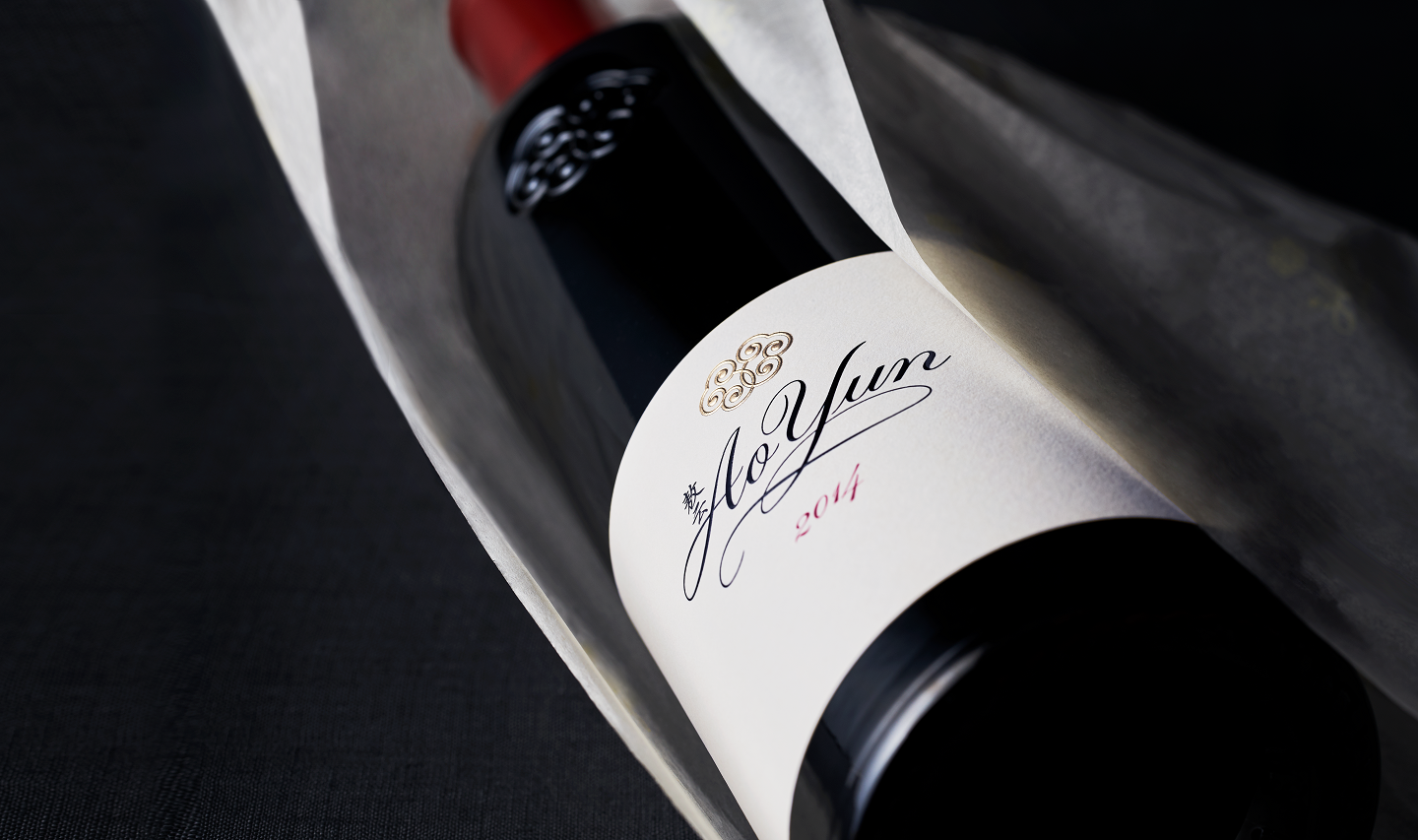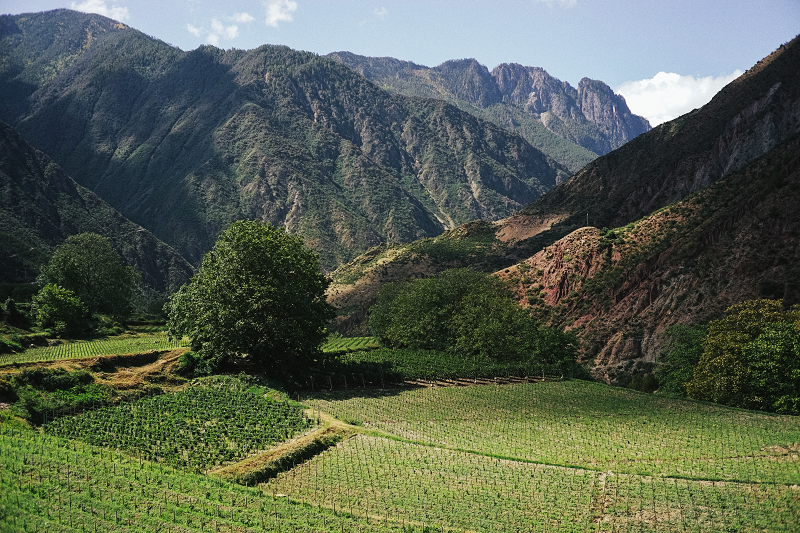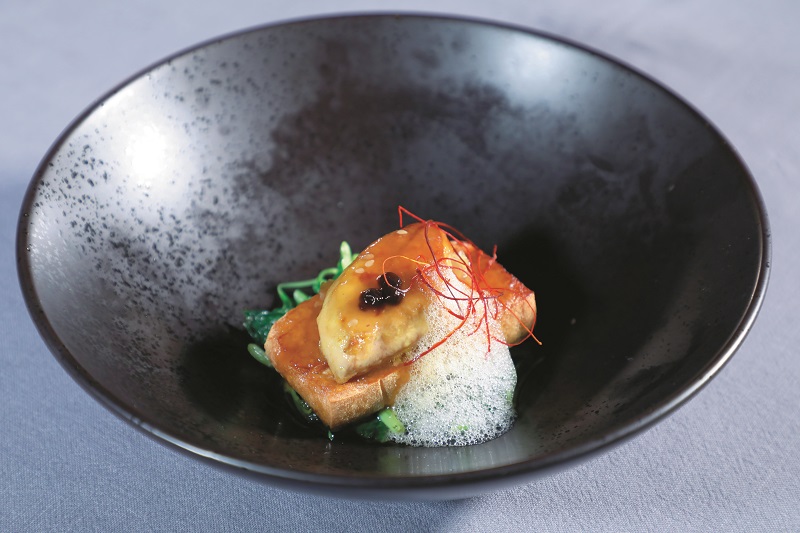
Ao Yun, meaning “flying above the clouds”, is aptly named as it is located at the foothills of the Himalayas with an altitude of 2,200m to 2,600m (Photo: LVMH)
It took around four years for Moët Hennessy to find the perfect spot for cultivating the grapes that would go on to become the next great red rising out of China — a wine named Ao Yun. “Consumption in China was booming. China has an exceptional terroir, and the ability to make great wines. We knew it, the question was where,” says international director for Estates and Wines Christophe Chauvet at W Hotel’s Chinese restaurant, Yen. Here to introduce Ao Yun’s second vintage, Chauvet tells Options about how the vision for this wine came to fruition. “We went with a team of viticulturists, analysts and consultants from Bordeaux and Australia, and we asked them to search for and find the best terroir in China, to tell us where to make a great wine and tell us where we should be establishing [ourselves],” he explains.
They first looked at Qingdao, but the area was too humid and would put the vines at risk of contracting diseases. Some places in the Eastern region were difficult to explore because of their politics and some places were far too cold, which would mean that they would have to bury the vines in the winter and dig them out in the spring. Finally, they found the perfect spot just north of Yunnan province, where the Yangtze, Salween and Mekong rivers meet. “We are working with two villages, two on the left bank and two on the right bank of the Mekong river. We believed that these four villages could deliver the magical grapes we were dreaming about,” adds Chauvet.

Ao Yun, meaning “flying above the clouds”, is aptly named as it is located at the foothills of the Himalayas with an altitude of 2,200m to 2,600m. Chauvet explains that the company’s expertise from its vineyards in Argentina had prepared it for the dizzying heights. “If you want to grow grapes and make wines, you need altitude. We usually say that 100m in altitude compensates for the latitude you are not on. 100m high will actually make you gain 1° of freshness, so 1,000m will give you 10°C in freshness and wines need water for freshness,” he says.
Other than altitude, winemakers have to deal with the lack of oxygen and odd sunlight hours. “We get three or four hours of sun every day, but it’s strong because we are closer to the sun. The intense UV light and rapid photosynthesis cultivates strong vines but the grapes also take longer to ripen. The ripening period we are talking about is 145 days, but in Bordeaux it is 120 days. Again, it is something we need to learn, to cope with and understand better,” he explains.

With subtle tannins, Ao Yun is a unique blend of Cabernet Sauvignon and Cabernet Franc. When asked about food pairings, Chauvet believes that Ao Yun works best with Szechuan food or any dish that uses a range of spices. He has even tried the wine with beef rendang and says it works well. At Yen, we begin the evening with a delicate starter of wok-fried foie gras, silky beancurd, vintage vinegar pearl and lemon foam. This is followed by a roast Peking duck folded in a wheat pancake with traditional sauces. The sweetness of this dish paired well with the mellow and smooth Ao Yun 2013.

The Ao Yun 2014 was a surprise, as it had a full-bodied and more powerful flavour. Served with a main of wok-fried wagyu beef, golden garlic, black pepper sauce and mashed potatoes, the 2014 worked well with all the spices. It is interesting to see how the robust 2014 compares with the more mellow but equally complex 2013. For the evening’s sweet conclusion we had Chili Magnum Royaltine mousse served with salted caramel popcorn and honeycomb. An odd dessert to be sure, especially the spicy Magnum, but definitely a sweet end to the night. Moët Hennessy has proved that its new luxury wine was worth the risk and is definitely here to stay. “We are here for 500 years, maybe 1,000 years. We have plenty of time. We just want to make sure we make the best wine, a great wine ... We are in a new thing which the world has no idea about, pushing the boundaries of winemaking. Every day is a learning exercise,” adds Chauvet.
This article first appeared on Feb 4, 2019 in The Edge Malaysia.


